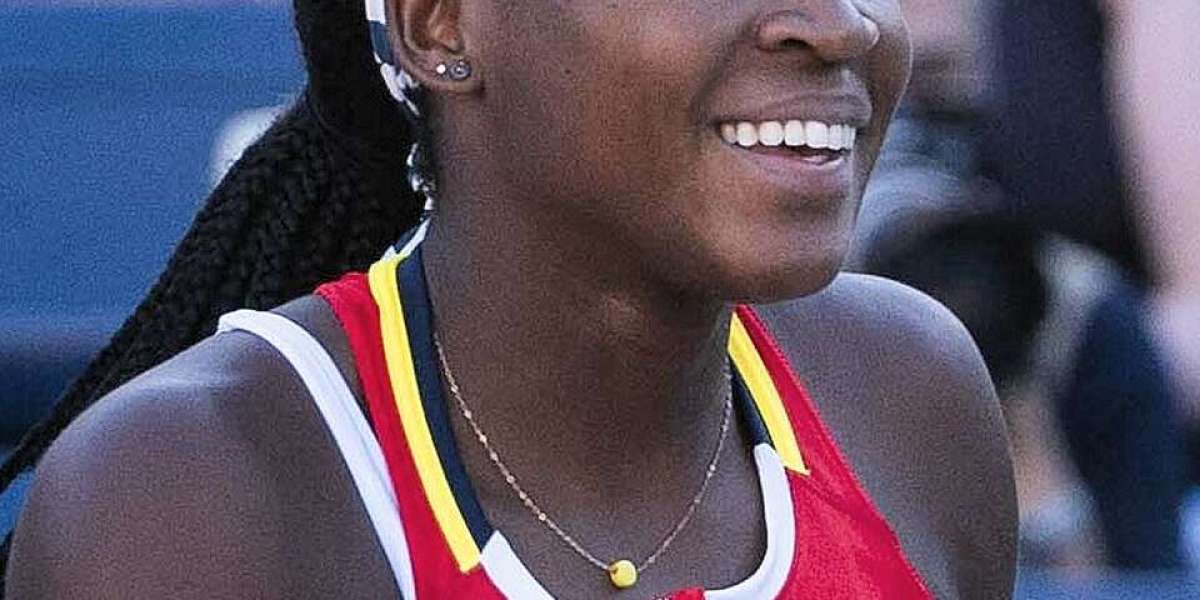article image source: en.wikipedia.org (link)
Coco Gauff has never been a stranger to the spotlight. Since her breakthrough at just 15, when she defeated Venus Williams at Wimbledon, the tennis world has eagerly followed her every move. Yet, despite her meteoric rise, this U.S. Open marked a new chapter in Gauff’s career—one where she took an unorthodox gamble that would bring both challenge and transformation.
In the days leading up to the tournament, Gauff made a bold decision that stunned many: she parted ways with her longtime coach Matt Daly and announced a partnership with serve specialist Gavin MacMillan. The timing of this shift was striking, as it coincided with the start of the biggest tennis event of the year—the U.S. Open. The decision to overhaul a fundamental aspect of her game, her serve, while under the intense public gaze, was risky, to say the least.

The Serve: A Technical Challenge
For any athlete, tinkering with the mechanics of a game so finely tuned over years can be a precarious venture. But Gauff’s serve had long been a weakness in her otherwise well-rounded game. Known for her speed, athleticism, and sharp court awareness, Gauff often found herself relying on grit to compensate for double faults and inconsistency in her serve. She acknowledged the need for change, not as a form of self-doubt, but as a necessity for her future growth.
MacMillan’s approach is grounded in biomechanics and technical precision. He identified that Gauff’s serve was compromised by a poor elbow angle and a drifting toss. These seemingly small flaws were contributing to the unforced errors that plagued her game. Unlike other players, who make these adjustments in the privacy of training courts, Gauff’s work with MacMillan was happening under the full glare of the media. Every service toss was scrutinized, every flaw amplified, and every victory or setback played out in front of millions of fans.
advertisement
The Pressure of the Public Eye
In her first-round match at the U.S. Open, Gauff demonstrated the pressure of the situation. Serving with a much slower speed—nearly 40 miles per hour less than her usual pace—she seemed to be working through the physical aspects of her new serve in real time. While the point wasn’t to fire aces, but rather to rebuild muscle memory, the process was far from easy. A less experienced player might have faltered under such intense scrutiny. But Gauff’s poise—something that has always been a hallmark of her character—remained intact.
She reflected on her decision in a pre-tournament press conference, saying, “I don’t want to waste time continuing doing the wrong things.” She understood that this moment in the U.S. Open was not about immediate success, but about positioning herself for greater achievements in the future. Gauff was prepared to lose early, knowing that this was merely a step in her ongoing evolution as a player.
Tears, Tension, and Triumph
The emotional weight of this decision became evident in her second-round match against Donna Vekić. Early in the set, Gauff struggled with double faults, including seven in the first set alone. As the pressure mounted, Gauff broke down, visibly shaken during a changeover. The camera captured her hands trembling, and tears welled up as she sat in her chair. But, rather than crumbling under the pressure, Gauff found a moment of clarity. She stood up, practiced her serve alone while waiting for Vekić’s injury timeout, and refocused herself.
In a tense and dramatic match, Gauff ultimately won 7–6, 6–2. It wasn’t a perfect performance by any means, but it was one marked by resilience. Afterward, in an emotional press conference, Gauff revealed how she had drawn strength from an unexpected source: gymnast Simone Biles. Watching Biles perform at the Tokyo Olympics, where she faced immense psychological pressure, Gauff drew a parallel. “If Simone Biles can balance herself on that beam, I can put a ball into a tennis court,” Gauff said, summing up her mindset.

image source: newyorker.com - copyright: Photograph by Charly Triballeau / Getty
A Shift in Confidence
By her third-round match against Magdalena Fręch, Gauff showed remarkable signs of improvement. Her first serve speed had regained some of its usual pace, and her confidence seemed to return. She managed the match with poise, finishing 6–3, 6–1, and even with four double faults, her performance felt more controlled. Gauff’s journey wasn’t about achieving perfection overnight, but rather about how she could push through moments of doubt and come out stronger for it.
The Long Road Ahead
While Gauff’s serve overhaul may take time to fully perfect, this U.S. Open is already a testament to her mental strength and commitment to long-term growth. It's a reminder that no athlete—no matter how talented—is immune to the ups and downs that come with competition. In a sport that demands both physical and mental fortitude, Gauff's willingness to confront and improve her weaknesses, even in the face of public scrutiny, is an inspiring example of resilience.
Her journey through this tournament underscores not only her potential but also the complexity of professional sports, where every setback is an opportunity for growth, and every victory is a product of perseverance.
Thank you !








